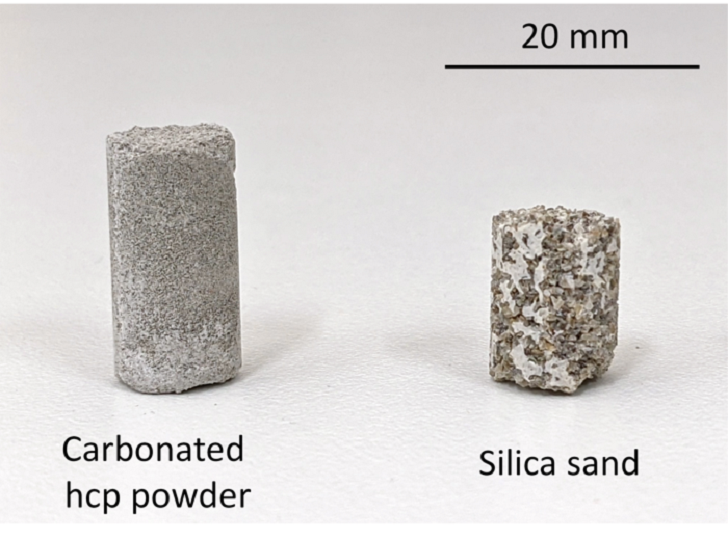A new approach to manufacturing concrete has been devised in a new study by researchers in Japan that uses recycled concrete and CO2 taken from the air, and which could lead to more sustainable building materials used by the construction industry.
While the production of concrete is an enormous worldwide industry – it is the second-most used substance globally, after water – it is also one of the biggest single sources of greenhouse gas emissions, with its main component of cement producing about 7% of global carbon dioxide emissions through its manufacture and use. Much of this 7% is from the necessary use of calcium, which is usually obtained through the burning of limestone.
Cement makers around the world have recently pledged to reduce their greenhouse gas emissions by up to a quarter this decade with the aim of reaching net zero by 2050. Although companies have been investigating how to change the chemical processes involved, cutting emissions from its production is problematic as the chemical processes used to make cement and concrete release CO2. It is estimated that reducing emissions from cement and concrete production by up to 25% by 2030 could avoid around 5 billion tonnes of CO2.
As reported in the Journal of Advanced Concrete Technology [Maruyama et al. J. Adv. Concr. Technol. (2021) DOI: 10.3151/jact.19.1052], the researchers demonstrated a process for producing calcium carbonate concrete from waste concrete or other industrial wastes and bicarbonate from carbon dioxide gas collected from the air or emitted by industrial plants, which acts as a binder for aggregates – either natural rocks or crushed demolished concrete.
The approach could lead to more environmentally friendly construction materials, particularly where there are scarce natural resources. As calcium carbonate is very stable, it is also a durable construction material, while its ability to recycle large quantities of material and waste is advantageous. As Takafumi Noguchi from the Department of Architecture at the University of Tokyo said, “We hope that in the coming decades, carbon-neutral calcium carbonate concrete will become the mainstream type of concrete and will be one of the solutions to climate change.”
The team produced samples of calcium carbonate concrete, one using hardened cement paste and the other using silica sand, both of which are conventional construction and demolition waste products. However, the strength and size limits of the new form of concrete still needs to be increased, and the energy use of the production process further reduced.




